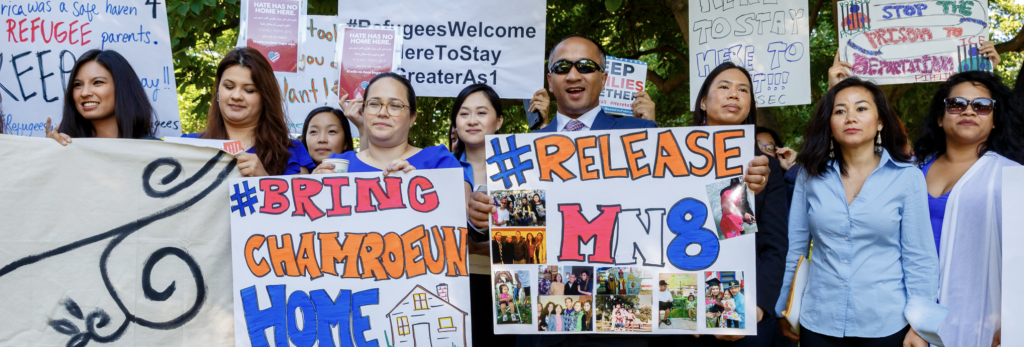In last month’s edition of free-range thinking, we featured an article entitled “Why Asset-Framing is Better Storytelling,” and we were thrilled to hear from many readers who expressed interest in applying this approach in their communications.
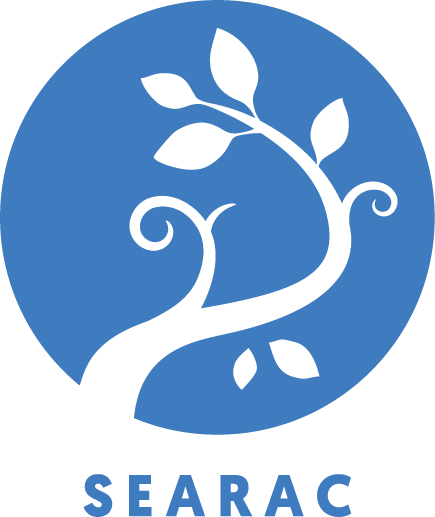 This month, in response to such enthusiastic feedback, we’re spotlighting an exemplary use of asset-framing by the Southeast Asia Resource Action Center (SEARAC), a national civil rights organization whose mission is to “[empower] Cambodian, Laotian, and Vietnamese American communities to create a socially just and equitable society.”
This month, in response to such enthusiastic feedback, we’re spotlighting an exemplary use of asset-framing by the Southeast Asia Resource Action Center (SEARAC), a national civil rights organization whose mission is to “[empower] Cambodian, Laotian, and Vietnamese American communities to create a socially just and equitable society.”
SEARAC recently created a series of public service announcements to mark the 25th anniversary of the Illegal Immigration Reform and Immigrant Responsibility Act. The final drafts of these PSAs are excellent examples of asset-framing, but earlier drafts were falling into the familiar trap of deficit-framing. Fortunately for our readers, SEARAC generously offered to share both versions with us, because when viewed side-by-side, they provide a helpful case study for any good cause looking to apply asset frames of their own.
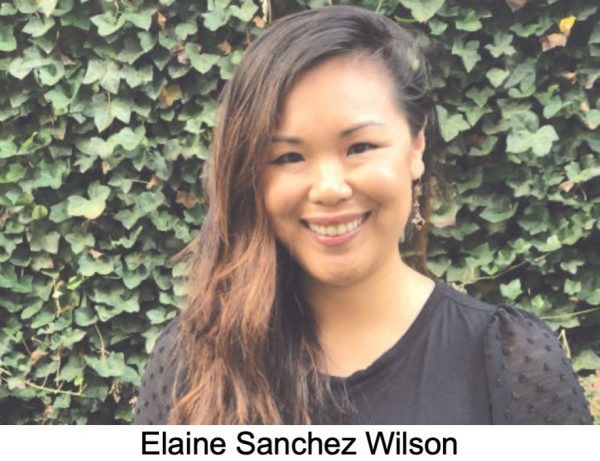 Elaine Sanchez Wilson, Director of Communications and Development for SEARAC, recently participated in one of our four-week storytelling classes, which contains a unit on ethical storytelling. After we presented background on Trabian Shorters and asset-framing, Elaine told us she had already been learning about this approach, and she wanted to share with us a project they were working on at SEARAC.
Elaine Sanchez Wilson, Director of Communications and Development for SEARAC, recently participated in one of our four-week storytelling classes, which contains a unit on ethical storytelling. After we presented background on Trabian Shorters and asset-framing, Elaine told us she had already been learning about this approach, and she wanted to share with us a project they were working on at SEARAC.
That project was the PSAs for the anniversary of the 1996 immigration act. Each PSA featured a story of a Southeast Asian American refugee who have served time for a decades-old conviction, and who was personally affected by deportation.
In the first draft profiles of these brave individuals, however, Elaine and her team hadn’t yet applied the principles of asset-framing. The descriptions they wrote leaned on deficit frames that remain all too common throughout the public interest sector. Here are two examples: (Please note: to protect privacy, we have replaced real names with pseudonyms and changed certain facts. While these are not actual profiles, they are accurate representations of the early drafts SEARAC had developed.)
Kiry Chan, a Cambodian refugee, experienced the trauma of the Killing Fields. He survived only to face the threat of deportation after serving 18 years in prison. Now, he has turned his life around to become a loving father and revered community member. Nevertheless, the threat of deportation is a constant in his life.
Minh Do, a Vietnamese refugee who endured gang violence and poverty growing up, served a long sentence in prison. He has since transformed his life, dedicating himself to serving his community. He is hoping to make things better by sharing his story. But despite the new life he has created for himself, ICE may deport him at any moment.
As you can see, the first thing you learn about each individual is that they are a “refugee,” which is a label that makes them more of a thing than a person. We learn they have “survived deportation” and “endured gang violence” before getting to anything positive, which is more likely to prompt pity as opposed to empathy.
After learning more about asset-framing, Elaine and her colleagues at SEARAC took another look at these profiles. They realized that how they introduce people can either reinforce stigmas or help to break them down, so they knew what they needed to do. Here are the new descriptions they wrote:
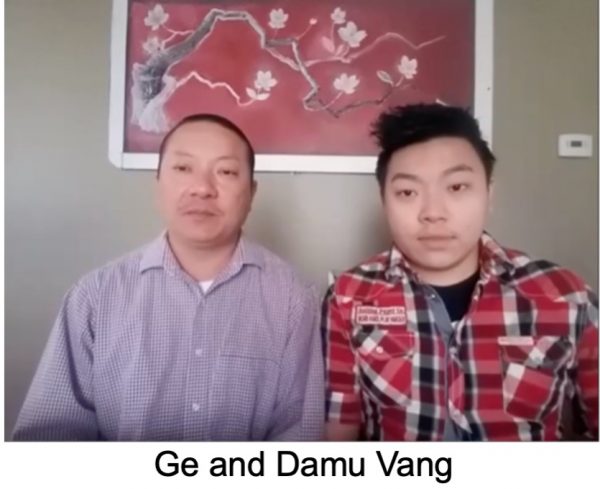 Ge Vang is a leader in the Hmong culture Vang clan. He is a father of four kids, including Damu who joins him in his PSAs. He recently won post-conviction relief, but, as a Hmong refugee, he still faces the threat of deportation. He wants people in similar circumstances to understand that they are not alone and that there are communities that want to help.
Ge Vang is a leader in the Hmong culture Vang clan. He is a father of four kids, including Damu who joins him in his PSAs. He recently won post-conviction relief, but, as a Hmong refugee, he still faces the threat of deportation. He wants people in similar circumstances to understand that they are not alone and that there are communities that want to help.
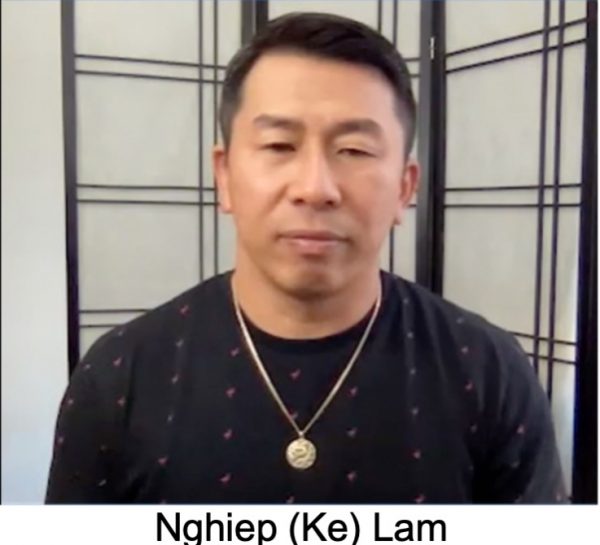 Nghiep (Ke) Lam is a member of a resilient and kind community of formerly incarcerated individuals, artists, queer leaders, and members of community organizations. He has been honored by every level of the US government (city, county, state, and federal) for his work. A refugee from Vietnam whose family survived the South China Sea and Hong Kong refugee camps to make it to America, Nghiep is doing this project in order to help give voice to the thousands of people fighting for their freedom to be accepted as citizens. Yet he can be deported at any moment to a place he barely knows.
Nghiep (Ke) Lam is a member of a resilient and kind community of formerly incarcerated individuals, artists, queer leaders, and members of community organizations. He has been honored by every level of the US government (city, county, state, and federal) for his work. A refugee from Vietnam whose family survived the South China Sea and Hong Kong refugee camps to make it to America, Nghiep is doing this project in order to help give voice to the thousands of people fighting for their freedom to be accepted as citizens. Yet he can be deported at any moment to a place he barely knows.
Leader. Father. Resilient. Kind. Consider how these words build a frame for the reader as opposed to refugee, survivor, trauma and poverty. Instead of meeting labels, we are meeting Ge and Nghiep as people with aspirations and contributions.
Today, Elaine and her team at SEARAC are changing the narrative about deportation not only by sharing stories, but also through the way they are sharing stories. We hope these examples they have generously shared will help you do the same.
